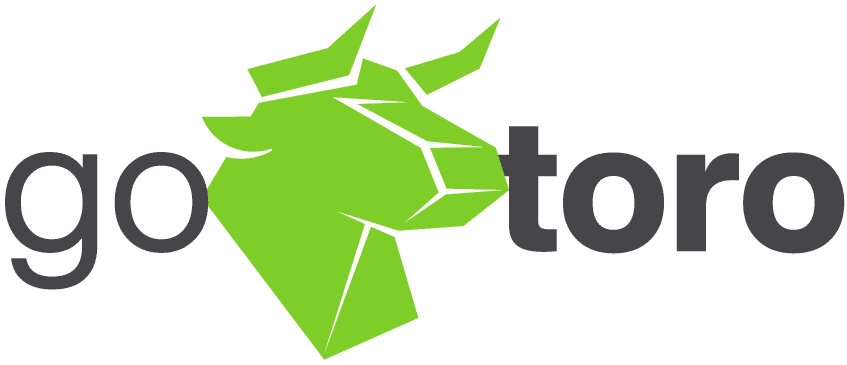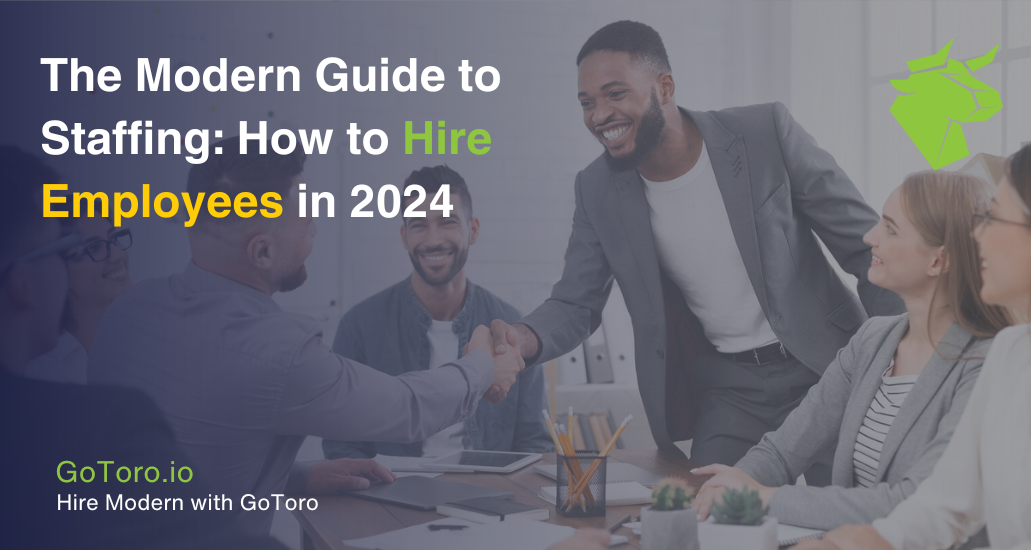Embracing Digital Transformation in How to Hire Employees
Digital transformation has revolutionized the recruitment process, making it more efficient and data-driven. Understanding how to hire employees in 2024 requires leveraging AI and automation to streamline many stages of hiring, from initial screening to final onboarding. By integrating these technologies, companies can significantly enhance their hiring processes.
Key Technologies for Hiring Employees
One of the most significant shifts in how to hire employees is the adoption of technology, particularly AI and automation tools. Modern recruiting platforms, such as Applicant Tracking Systems (ATS) and AI-powered chatbots, are helping businesses handle massive amounts of applicant data with ease. These systems automatically sort, rank, and assess candidates based on predetermined criteria, allowing recruiters to focus on higher-level decision-making.
Chatbots assist with initial inquiries, guide candidates through the application process, and even schedule interviews, creating a seamless experience for both employers and applicants. These technologies are especially beneficial for high-volume hiring needs, ensuring that no qualified candidate slips through the cracks.
Benefits of AI and Automation in Hiring Employees
The digital transformation of hiring brings numerous benefits, making the process faster and more accurate. AI reduces time-to-hire by quickly processing large volumes of applications, matching candidates to roles based on their skills and qualifications. This speed not only improves operational efficiency but also enhances the candidate experience by providing quicker responses.
Additionally, automation minimizes human errors, ensuring that each candidate is fairly assessed based on objective criteria. This accuracy improves the quality of hires, ensuring a better fit between the candidate and the job.
Promoting Diversity & Inclusion in How to Hire Employees

Creating a diverse and inclusive workplace is now an essential part of how to hire employees in 2024. Companies that focus on diversity and inclusion are more likely to attract top talent, improve innovation, and foster long-term success. Employees from varied backgrounds bring different perspectives, helping businesses stay competitive and adaptable in a global market.
Strategies for Building a Diverse Workforce
Hiring diverse employees starts with inclusive recruitment strategies. One effective method is blind recruitment, where identifying details such as name, gender, and background are removed from resumes to prevent unconscious bias. Additionally, crafting inclusive job descriptions that avoid gendered language or unnecessarily specific requirements can broaden your talent pool.
Another important aspect is fostering an inclusive workplace culture. Companies should ensure that they not only hire diverse employees but also create environments where everyone feels valued and supported. This can be achieved through employee resource groups, diversity training programs, and clear communication of the company’s commitment to inclusion.
The Long-term Impact of Diversity and Inclusion on Hiring Employees
Promoting diversity and inclusion leads to numerous long-term benefits for companies. A more diverse workforce drives innovation, as employees with varied backgrounds and experiences can offer unique solutions to challenges. Furthermore, companies with inclusive cultures see higher employee satisfaction and retention, as individuals feel more engaged and supported.
Finally, businesses that actively promote diversity and inclusion build stronger employer brands, making it easier to attract top-tier talent. Candidates today, especially from younger generations, are prioritizing companies with clear values and inclusive practices. By emphasizing these aspects, your business can become an employer of choice in 2024.
Leveraging Programmatic Job Advertising in How to Hire Employees
In today’s digital age, how to hire employees effectively requires utilizing cutting-edge tools like programmatic job advertising. This approach allows businesses to automate and optimize their job postings, ensuring they reach the right candidates with precision.
How Programmatic Advertising Targets Job Ads
Programmatic advertising uses algorithms to place job ads in front of the most suitable candidates based on their online behavior, browsing history, and demographics. This data-driven method eliminates much of the guesswork associated with traditional advertising, ensuring that your job openings are seen by individuals who are likely to be a good match for the role.
For example, if a candidate has visited websites related to a specific industry or has previously searched for jobs in your field, programmatic algorithms will serve them your job ads. This method not only helps in finding active job seekers but also targets passive candidates who may not be actively looking but are open to new opportunities.
Data-Driven Precision in Hiring Employees
One of the key advantages of programmatic advertising is its data-driven precision. By analyzing candidate data, businesses can ensure that their hiring efforts are highly targeted. Programmatic ads can be adjusted in real time, optimizing the budget and ensuring ads are displayed to individuals with the highest likelihood of converting into applicants.
This precision is especially valuable for hard-to-fill roles, as it allows companies to reach niche audiences and passive candidates who may not be actively searching but match the job criteria.
ROI: Maximizing Your Hiring Budget
Programmatic job advertising offers better return on investment (ROI) compared to traditional methods. With automated spending, businesses can set specific budgets and monitor ad performance, reallocating funds to the highest-performing ads. This results in higher conversion rates, as ads are delivered only to those most likely to apply, ultimately reducing the overall cost-per-hire.
Remote Hiring Best Practices in How to Hire Employees

As remote work becomes increasingly popular, how to hire employees for remote roles presents unique challenges. Companies need to adapt their hiring strategies to effectively recruit, vet, and integrate remote employees into their teams.
Key Practices for Remote Hiring
To successfully hire remote employees, companies should start by conducting virtual interviews using video conferencing platforms. These interviews should assess both the candidate’s technical abilities and their ability to thrive in a remote environment. It’s important to evaluate remote work skills such as self-motivation, time management, and communication abilities.
Assessing cultural fit is also crucial, especially when building remote teams. Video-based interactions can provide insight into how candidates may integrate with your company’s culture, despite the physical distance. Providing clear expectations during the hiring process regarding remote work expectations is another critical step.
Challenges in Remote Hiring
Hiring remote employees introduces new challenges, especially during onboarding and integration. Onboarding remote workers can feel impersonal, so it’s essential to use digital onboarding tools to help new hires feel welcome. Regular video meetings, mentorship programs, and team-building exercises can help remote employees engage with the company culture and colleagues.
Maintaining long-term engagement and collaboration also requires effort. Managers must focus on building trust, fostering open communication, and ensuring remote employees feel supported, even from a distance.
Candidate Assessment Tools in How to Hire Employees
When considering how to hire employees, it’s crucial to go beyond traditional resumes and interviews. Utilizing digital assessment tools can help businesses evaluate candidates more effectively, ensuring a better fit for the role.
Key Candidate Assessment Tools for Hiring Employees
Several platforms now offer digital assessments to measure technical skills, cognitive abilities, and personality traits. Tools like HackerRank and Codility are particularly useful for assessing coding and technical abilities in candidates for IT roles. Similarly, platforms like Criteria Corp provide soft skills and cognitive assessments, helping employers evaluate problem-solving abilities, communication, and teamwork.
These tools offer a more comprehensive understanding of a candidate’s qualifications than resumes alone, providing a more accurate prediction of job performance.
Improved Fit Through Objective Assessments
By using these objective assessments, companies can reduce unconscious bias in hiring. Candidates are evaluated based on their abilities and suitability for the job, rather than subjective factors that might influence decisions in traditional interviews. This leads to better-quality hires, as the assessments are aligned with the core competencies required for success in the role.
Incorporating candidate assessment tools into your hiring process ensures a more precise, fair, and effective method of identifying top talent, ultimately improving employee retention and job satisfaction.
Enhancing Candidate Experience in How to Hire Employees

A critical factor in how to hire employees successfully is creating a positive candidate experience. This aspect can make or break a company’s reputation, influencing whether candidates accept job offers or even apply in the first place. A smooth, transparent process builds trust and enhances your employer brand.
Key Elements of a Positive Candidate Experience
To optimize the candidate experience, clear communication at every stage of the hiring process is essential. From the moment candidates apply, they should receive timely updates about their application status. A streamlined application process that is user-friendly and mobile-optimized is also crucial in keeping candidates engaged. Additionally, providing constructive feedback—whether a candidate is successful or not—leaves a lasting positive impression.
Impact of a Positive Candidate Experience
A well-managed candidate experience doesn’t just impact current applicants. Candidates who have a good experience, even if they don’t get the job, are more likely to reapply for future opportunities or recommend your company to others. This helps expand your candidate pool and strengthens your overall recruitment efforts, proving that enhancing the candidate experience is a key strategy in how to hire employees more effectively.
Skills-Based Hiring: A Modern Approach to How to Hire Employees
As hiring practices evolve, how to hire employees has shifted from focusing solely on education and tenure to prioritizing skills-based hiring. This approach places greater importance on a candidate’s actual capabilities, certifications, and real-world experience.
Key Focus Areas for Skills-Based Hiring
Technical skills and soft skills are now just as, if not more, important than degrees or traditional qualifications. Employers are increasingly looking for candidates who can demonstrate relevant experience and problem-solving abilities. For example, in the tech industry, coding proficiency and project management are more valuable than formal education, while in customer service, communication and conflict resolution skills take precedence over academic credentials.
The Result of Skills-Based Hiring
By adopting a skills-based hiring approach, companies gain access to a broader talent pool. This method allows employers to consider non-traditional candidates who have the practical skills and certifications necessary for success. In turn, it promotes diversity and inclusivity, fostering innovation and bringing fresh perspectives into the workforce.
Crafting a Strong Employee Value Proposition (EVP) in How to Hire Employees
In today’s competitive job market, a compelling Employee Value Proposition (EVP) is essential when considering how to hire employees who are motivated and aligned with your company’s values. A well-crafted EVP goes beyond offering a paycheck; it communicates why employees should choose your company over others.
Core Components of an Effective EVP
The most attractive EVPs focus on elements like work-life balance, flexible work options, and career growth opportunities. Candidates today want more than just a salary—they look for companies with a strong company culture, comprehensive benefits, and opportunities for learning and advancement. Highlighting these areas in your EVP ensures that your business stands out to top-tier talent.
How a Strong EVP Attracts Top Talent
A compelling EVP creates a strong employer brand that resonates with job seekers. When you articulate your company’s unique value proposition clearly, it becomes easier to engage and attract the right talent. This focus on your EVP is a key component in how to hire employees who are not only qualified but are also a great fit for your company’s culture and vision.
Building Talent Pools & Pipelines for How to Hire Employees
When thinking about how to hire employees, having a solid talent pool and pipeline strategy is essential for long-term recruitment success. This approach allows companies to engage with potential candidates before a role even becomes available, reducing time-to-hire and improving the quality of candidates.
Strategies for Building Talent Pools and Pipelines
To maintain an effective talent pool, businesses can leverage CRM tools to track and engage with candidates. By keeping candidates informed about future job opportunities or company updates, you nurture a relationship with them over time. This engagement ensures that when positions do open up, you have a ready pool of pre-vetted candidates to choose from.
Efficiency Gains Through Talent Pipelines
Having a well-established talent pipeline significantly reduces time-to-hire. Instead of starting from scratch when a new position opens, you can draw from a pool of interested, pre-qualified candidates. This proactive approach to recruitment makes how to hire employees faster, more efficient, and better aligned with your business needs.
Using AI-Powered Candidate Screening in How to Hire Employees

Artificial intelligence (AI) is transforming how to hire employees, particularly in the early stages of the hiring process. AI-powered candidate screening tools are helping companies streamline recruitment, saving time and improving the accuracy of candidate selection.
Efficiency Through AI Screening
AI-driven tools can automate the initial vetting process by scanning resumes, analyzing applications, and comparing them to job descriptions. These tools can rank candidates based on their qualifications, experience, and even cultural fit, enabling recruiters to focus on high-quality candidates from the start. This level of automation saves significant time and ensures that only the most suitable applicants move forward in the hiring process.
Reducing Bias in Hiring with AI
One of the key advantages of using AI in how to hire employees is its potential to reduce unconscious bias. AI tools, when properly calibrated, can focus solely on a candidate’s qualifications and skills, rather than personal details like name, gender, or background. This helps ensure a more objective selection process and contributes to more diverse hiring outcomes.
Employer Branding in How to Hire Employees
Building a strong employer brand is essential when considering how to hire employees in a competitive job market. Your brand represents your company’s values, culture, and work environment, which helps you attract top-tier talent and retain your best employees.
Strategies to Strengthen Employer Branding
To build a strong employer brand, it’s important to showcase your company culture authentically. This can be achieved by highlighting employee success stories, sharing behind-the-scenes content, and offering insight into your team dynamics. Platforms like Glassdoor and LinkedIn are key to this strategy—these channels provide opportunities for companies to highlight their workplace values and engage with potential candidates.
Encouraging employees to share their positive experiences and professional growth within your company can also strengthen your brand’s visibility. Employee testimonials, along with company updates that celebrate accomplishments and milestones, further position your company as an attractive place to work.
Competitive Edge Through Employer Branding
A well-defined employer brand gives your company a competitive edge by attracting high-quality applicants. Candidates are more likely to apply if they feel connected to your values and culture. Moreover, a strong employer brand can help reduce the cost-per-hire, as candidates actively seek out opportunities with companies that have a good reputation, saving you resources in recruitment marketing.
Data-Driven Decision-Making in How to Hire Employees
When determining how to hire employees, data and analytics provide invaluable insights that enable smarter, more efficient recruitment strategies. By using data to inform every stage of the hiring process, companies can optimize sourcing, improve candidate selection, and enhance onboarding experiences.
Key Metrics to Track in Data-Driven Hiring
Data-driven hiring starts with tracking key metrics like cost-per-hire, time-to-hire, and quality of hire. Monitoring these metrics helps you understand how well your current recruitment strategies are working and where improvements can be made. Additionally, tracking candidate engagement metrics, such as application completion rates and interview attendance, allows you to adjust your approach in real time.
These insights also provide clarity on which sourcing channels bring in the best candidates, enabling you to allocate resources more effectively. For example, if data shows that candidates from LinkedIn tend to perform better during interviews and stay longer with the company, you can prioritize that platform in your recruitment efforts.
Impact of Data-Driven Hiring
The impact of using data in how to hire employees is significant. Data-driven decisions help reduce the reliance on guesswork, resulting in more accurate and objective hiring processes. This leads to improved outcomes, such as better quality hires, faster onboarding, and reduced turnover. Additionally, by continuously analyzing hiring data, companies can refine their recruitment strategies to meet evolving business needs.
Compliance & Legal Considerations in How to Hire Employees
When planning how to hire employees, staying compliant with labor laws and regulations is critical. Employment laws vary by region and industry, and failing to adhere to them can result in legal challenges and financial penalties.
Key Compliance Considerations in Hiring
Key legal considerations include anti-discrimination laws, which ensure fair treatment of candidates regardless of race, gender, religion, or other protected characteristics. It’s essential to implement policies that support equal opportunity hiring practices, avoiding bias in job descriptions, interviews, and hiring decisions.
Employers should also stay updated on minimum wage requirements, especially if hiring across different regions or countries. This ensures you meet legal pay standards and avoid labor disputes.
Additionally, companies must comply with GDPR and other data privacy regulations when handling candidate data. This includes gaining explicit consent to collect and store personal information and ensuring that sensitive data is securely stored and protected.
Avoiding Legal Pitfalls in Hiring
Remaining compliant reduces the risk of legal action and ensures fair hiring practices. By regularly reviewing and updating your hiring policies, you can avoid common legal pitfalls and maintain a transparent, ethical recruitment process. This also enhances your employer brand, as candidates are more likely to trust companies that follow fair hiring standards.
Sustainability & Corporate Responsibility in How to Hire Employees
In today’s job market, how to hire employees often involves showcasing your company’s commitment to sustainability and corporate social responsibility (CSR). Modern job seekers, particularly from younger generations, are drawn to organizations that prioritize ethical and environmental practices.
Strategies to Highlight Sustainability & Corporate Responsibility
To attract purpose-driven employees, businesses should actively promote their eco-friendly initiatives and social responsibility programs. This might include adopting green practices within the workplace, such as reducing waste, conserving energy, or implementing recycling programs.
Additionally, forming charitable partnerships and supporting local or global causes can further demonstrate your company’s commitment to making a positive impact. Sharing these initiatives through your website, social media, and job listings can engage candidates who align with your values.
Attraction of Purpose-Driven Employees
Focusing on sustainability and CSR in your hiring strategy attracts employees who are motivated by more than just a paycheck. These candidates tend to be highly engaged and committed to their work, knowing that they are contributing to an organization that shares their values. Emphasizing your company’s stand on important social and environmental issues not only enhances your employer brand but also strengthens your workforce with passionate, purpose-driven employees.
Flexible Work Arrangements in How to Hire Employees

In today’s evolving job market, offering flexible work arrangements is a significant advantage when considering how to hire employees effectively. Flexibility is no longer seen as a perk but as a critical factor in attracting top talent.
Importance of Offering Flexible Work Options
Providing flexible options, such as remote work, hybrid schedules, or flexible hours, opens the door to a broader talent pool. These options allow employers to tap into candidates who may have been previously unavailable due to geographic or personal constraints. Flexibility also fosters a better work-life balance, which improves employee satisfaction and leads to a more engaged workforce.
Impact of Flexibility on Hiring and Retention
Flexibility in the workplace has proven to be a key factor in employee retention. Employees who feel trusted to manage their own time are less likely to leave for other opportunities. Offering flexible work arrangements helps reduce turnover rates, saving time and resources that would otherwise be spent on recruiting replacements. This is a critical aspect of how to hire employees in 2024, as workers increasingly seek employers who value flexibility.
Upskilling & Reskilling in How to Hire Employees
To stay competitive in today’s market, companies need to prioritize upskilling and reskilling initiatives when thinking about how to hire employees. As industries evolve, offering continuous learning opportunities is crucial to ensuring your workforce stays relevant and productive.
Strategies for Upskilling & Reskilling Employees
Providing access to online learning platforms, certification programs, and internal training sessions are key strategies for upskilling your workforce. Encouraging both new hires and existing employees to pursue further development not only improves individual performance but also enhances overall company capabilities. Offering such opportunities demonstrates that you’re invested in employee growth, which can be a significant draw for new talent.
The Result of Focusing on Internal Talent Development
By developing internal talent, businesses can reduce their reliance on external recruitment, which helps lower hiring costs. Employees who feel valued and see growth opportunities within the company are more likely to stay, leading to higher retention rates. This strategy not only improves job satisfaction but also ensures your workforce has the skills needed to navigate future challenges.
Tech-Driven Onboarding in How to Hire Employees
The onboarding process plays a crucial role in how to hire employees effectively. A smooth and engaging onboarding experience helps new hires feel welcome and sets the tone for their entire employment journey. Utilizing technology during onboarding can streamline the process and improve its overall effectiveness.
Key Tools for a Tech-Driven Onboarding Process
Leveraging digital platforms for virtual tours, interactive training modules, and document management systems can enhance the onboarding experience. These tools enable new hires to complete paperwork, access important company resources, and participate in training from anywhere, ensuring a seamless and efficient start to their new role.
Impact of a Well-Structured Onboarding Process
A tech-driven onboarding process accelerates new hire productivity, as employees can quickly acclimate to the company and their responsibilities. It also reduces turnover by creating a more engaging and supportive experience right from the start. By investing in the right tools and processes, you can set your employees up for long-term success and create a positive first impression of your company.
Conclusion: Wrap Up
In summary, understanding how to hire employees in 2024 involves embracing digital transformation, offering flexible work options, and focusing on continuous employee development through upskilling and reskilling. Additionally, leveraging technology for onboarding and building a strong employer brand will give companies a competitive edge in attracting and retaining top talent.
If you’re ready to elevate your hiring strategy and attract the best candidates, request a demo from GoToro today to see how we can help you streamline your recruitment process and improve your hiring outcomes.


